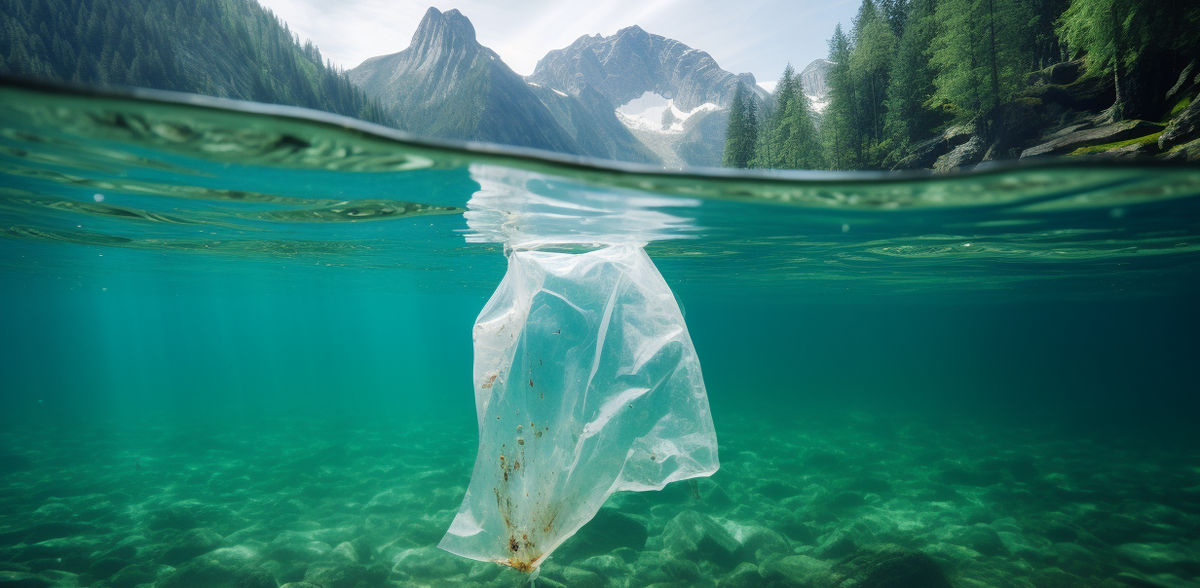Microplastic pollution: some lakes are worse impacted than oceans
Researchers surprised by extent of pollution
Advertisement
microplastics are found in lakes and reservoirs around the world. Pollution reaches even the most secluded places where human influence is minimal. Moreover, concentrations of microplastics in freshwaters are sometimes higher than in subtropical gyres, the marine areas where large amounts of waste accumulate. These are the findings of an international study of 38 lakes and reservoirs led by the University of Milan-Bicocca in Italy, with the participation of IGB, and published in the journal Nature.
The international researchers studied 38 lakes and reservoirs with different environmental conditions to identify factors associated with an increased observation of plastics. They found microplastics in all studied lakes and reservoirs, even in remote areas. Not unexpectedly, two types of lakes appeared to be particularly vulnerable to microplastic pollution: lakes and reservoirs in densely populated and urbanized areas; and large lakes and reservoirs with elevated deposition areas, long water retention times, and high levels of anthropogenic influence.
Researchers surprised by extent of pollution
However, the researchers were surprised by the extent of pollution in some lakes: although microplastic concentrations varied widely from lake to lake, in the most polluted lakes they reached or even exceeded those reported in the infamous subtropical gyres, i.e. the ocean regions where large amounts of debris accumulate.
"Our results provide the first comprehensive picture of microplastic pollution in lakes. They highlight the importance of including lakes and reservoirs in the fight against microplastic pollution for pollution management and continued provision of lake ecosystem services," said Professor Hans-Peter Grossart, scientist at IGB and co-author of the study.
To cover different types of lakes, the researchers encompassed a wide gradient of lake features and catchment characteristics, like size, depth, population density and degree of urban land cover. As they performed a snapshot sampling, the temporal and spatial variation of plastic abundance was not included.
Forty-five percent of lakes contain more than one plastic particle per cubic metre water
The researchers filtered an average of 140 cubic metres of lake water per site. They only counted microplastic particles larger than 0.25 millimetres. They also analysed the type of plastic and found mainly polyester, polypropylene and polyethylene.
The plastic signature differed greatly among systems: plastic concentrations varied over four orders of magnitude, from 0.01 to more than 10 particles per cubic metre. But even in remote areas, such as Lake Tahoe in the Sierra Nevada or mountain lakes, plastic waste was found at relatively high concentrations. Forty-five per cent of the lakes studied had >1 particle per cubic metre, and the most polluted lakes had more than 10 particles per cubic metre.
Lakes with long water retention times act as sinks for plastic waste
Some of the lakes with the highest plastic waste pollution are important sources of drinking water for the local population, such as Lake Maggiore (IT), Lake Lugano (CH-IT), Lake Tahoe (USA) and Lake Neagh (UK), which are also important for the recreational industries. Large lakes are sinks for plastics due to the long residence time of the water. In Lake Tahoe, for example, the water has a residence time of about 650 years. "Such lakes act as 'traps' for plastics and can accumulate significant amounts of microplastic waste over time," explained IGB researcher Dr. Stella Berger, co-author of the study.
In Germany, Lake Stechlin surprised the researchers with relatively high microplastic concentrations in the form of microfibers, because the shore of the lake is largely natural and surrounded by beech forest. "Presumably, these are mainly fibers from the clothing of bathers," Hans-Peter Grossart suspected.
Drinking water and ecosystems at risk
Microplastic pollution not only has a negative impact on drinking water, but also on aquatic organisms and ecosystem functioning. Veronica Nava from the University of Milan-Bicocca, who led the study, explained: "Plastic that accumulates on the surface of aquatic systems can promote the release of methane and other greenhouse gases. Plastics can reach beyond the hydrosphere and interact with the atmosphere, biosphere and lithosphere, potentially affecting biogeochemical cycles, i.e., the circulation between the various compartments of the earth of chemical elements that pass from living matter to inorganic matter through chemical transformations and reactions, through mechanisms that have yet to be understood and require a holistic assessment of plastic pollution in lentic systems.”
Research network enabled large-scale study
The study is unique in its geographical scope and comparability of results. Previous studies have mainly focused on a limited number of freshwater systems in restricted geographical regions. In addition, a lack of standardised sampling methods has prevented direct quantitative comparisons across studies. This study was carried out as part of the GLEON network. GLEON is the Global Lake Observatory Network, in which researchers from around the world regularly collect data from lakes under standardised conditions. This gives them a global picture of how lakes are changing as a result of climate change and other human influences.




























































